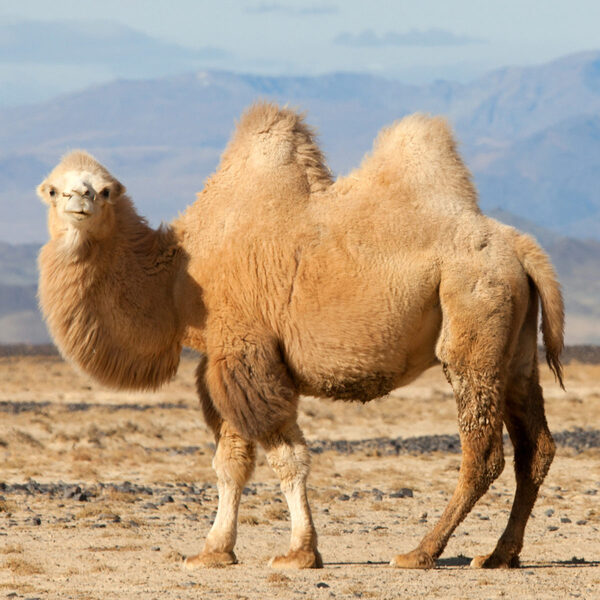When you think of animals with humps, camels are likely the first that come to mind. These iconic creatures are symbols of resilience and adaptability in some of the harshest climates on Earth. But camels aren’t the only animals with hump-like features. Let’s explore these fascinating adaptations, their purpose, and the animals that possess them.

Camels are well-known for their humps, but did you know that there are different types of camels with varying numbers of humps?
Dromedary Camels:
Found in North Africa, the Middle East, and parts of India.
One hump that acts as a fat storage system.
Well-suited for hot desert climates with temperatures reaching over 50°C (122°F).
Bactrian Camels:
Found in Central Asia, including Mongolia and the Gobi Desert.
Two humps, making them easily distinguishable from dromedary camels.
Adapted to colder, rocky environments, often enduring freezing temperatures.
The two humps on a Bactrian camel allow it to carry heavy loads over long distances, even in extreme climates.
Despite common misconceptions, camel humps do not store water. Instead, they are packed with fat reserves. This stored fat allows camels to survive for extended periods without food by breaking the fat down into energy.
Fat Storage: A single hump can hold up to 35 kilograms (77 pounds) of fat.
Energy Conversion: The fat can be converted into both energy and water, helping the camel survive in arid conditions.
The design is efficient: the hump localizes fat storage, preventing heat insulation across the body and keeping camels cool in the desert.
Camels have extraordinary physiological adaptations that allow them to thrive in harsh environments:
Efficient Hydration: A camel can drink up to 40 gallons (150 liters) of water in one session, replenishing their reserves.
Reduced Water Loss: Camels lose very little water through sweat and urine. They can also tolerate dehydration levels that would be fatal to most other animals.
Fat Metabolism: When food and water are scarce, camels convert the fat in their humps into energy and water.
A camel can survive for up to two weeks without water and months without food, depending on the size of its hump.
The main differences between the two species lie in their humps and habitats:
Dromedary Camels:
One hump.
Found in hot, arid regions.
Sleek, light frame built for speed.
Bactrian Camels:
Two humps.
Adapted to cold, rocky terrains.
Sturdy build, better for carrying heavy loads.
Camels are the only animals with true fat-filled humps, but several other animals possess hump-like structures.
While llamas and alpacas don’t have true humps, they have a slight curve to their backs that might resemble one.
Similarities to Camels: Llamas and alpacas are relatives of camels, sharing ancestry in the Camelidae family.
Adaptations: These animals are well-suited to high-altitude environments in South America, where food and water can be scarce.
Humpback whales, as their name suggests, have a "hump." However, this isn’t a true hump like that of a camel. Instead:
What It Is: The hump is a result of their unique diving motion, where they arch their backs dramatically.
Purpose: It aids their streamlined movement and agility in water.
These animals have muscular humps on their shoulders:
Composition: Unlike camel humps, these are made of muscle and bone, not fat.
Purpose: The hump provides strength and supports the animal’s large head and heavy horns, crucial for grazing and combat.
Zebu Cattle: Known for their large fatty humps over their shoulders, zebus use these as energy reserves.
Giraffes: While not true humps, their prominent shoulders give a hump-like appearance.
Humps and hump-like structures serve different purposes depending on the species:
Energy Storage: In camels and zebus, humps store fat for survival during food and water shortages.
Strength and Support: In animals like bison and buffalo, muscular humps provide power for carrying their heads and engaging in combat.
Streamlining: Humpback whales have evolved hump-like shapes for efficient movement in water.
Each adaptation reflects the specific needs of the animal’s environment and lifestyle.
Camels didn’t always have humps. Over millions of years, they evolved these specialized structures as a response to extreme environments.
Desert Adaptation: The ability to store fat in one or two humps allowed camels to survive long journeys across deserts with scarce resources.
Energy Conservation: By localizing fat storage, camels reduced heat insulation across their bodies, helping them stay cool in the desert.
The hump is a marvel of evolutionary design, showcasing how animals adapt to their environments.
Camels have long been revered for their humps and their ability to endure the harshest conditions.
Symbol of Survival: In many Middle Eastern and Asian cultures, camels represent endurance and resilience.
Domestication: Camels have been used for thousands of years to transport goods, people, and water across vast deserts.
Traditional Medicine: In some cultures, camel hump fat is believed to have medicinal properties, such as alleviating joint pain and improving skin health.
No. Camels store fat, which can be metabolized into water and energy.
Camels are the only animals with true fat-filled humps. Other animals, like bison, have muscular humps.
When a camel uses up its fat reserves, its hump becomes smaller and droops. It regains shape when the camel replenishes its energy through food.
The two humps provide additional fat storage, allowing Bactrian camels to survive in colder climates with fewer resources.
Animals with humps showcase the incredible diversity and adaptability of life on Earth. From the energy-storing humps of camels to the muscular humps of bison and the streamlined backs of humpback whales, these features are tailored to the specific needs of each species.
Understanding the purpose and evolution of humps helps us appreciate nature’s ingenuity and the resilience of these fascinating creatures. Whether crossing deserts or thriving in frigid climates, animals with humps remind us of the beauty and adaptability of the natural world.
animal tags: Camels
We created this article in conjunction with AI technology, then made sure it was fact-checked and edited by a Animals Top editor.